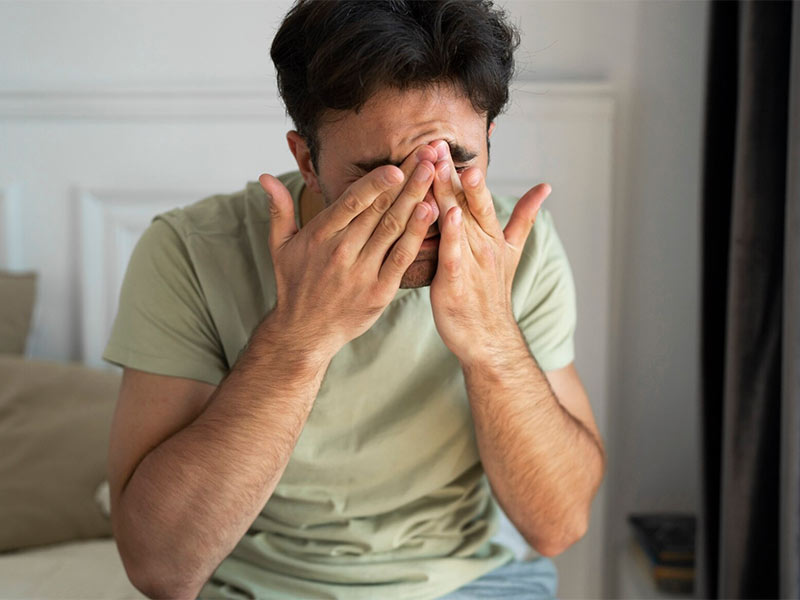
04 Dec Allergy to moisture: a big danger
Can you imagine that the walls of your home conspired to trigger an allergy to moisture? Well, it turns out it’s not so crazy. Wall moisture allergy is more common than you think, and it’s like having an invisible enemy hovering in your own domain. From Humilogic, we show you everything you need to know about allergy and humidity.
Contenidos
Allergies and humidity on walls
When you think about allergies, you probably don’t consider walls to be guilty. But, walls can be clever. Moisture seeps into cracks and nooks, making it the perfect ally for mold and other allergens that unleash a real storm for those sensitive to allergies.
How do you know if your walls are unleashing allergic havoc?
Detecting if your walls are triggering allergic havoc may require some observation and attention to detail.
- Mold stains: mold stains are a clear indicator of moisture problems. If you notice green, black, or even white spots on the walls, mold is likely present, a known allergy trigger.
- Smell of moisture: a persistent smell of moisture or wet soil can be a sign that there are moisture problems on the walls. Even if you don’t see stains, pay attention to unpleasant smells.
- Paint changes: peeled or bubble paint may be an indication that moisture is affecting the integrity of the walls. Damaged paint can be a conducive place for mold growth.
- Cracks in walls: cracks in walls can allow moisture to seep in and create an allergen-friendly environment. Pay special attention to areas where walls meet the ceiling and floor.
- Allergy symptoms: if you experience allergy symptoms, such as nasal congestion, frequent sneezing or eye irritation, and these symptoms intensify inside your home, it may be indicative of allergic problems related to moisture on the walls.
- Excessive humidity: measure the relative humidity in your home with a hygrometer. A humidity level above 60% could be conducive to the proliferation of mold and other allergens.
How to fight an allergy to humidity?
Fighting moisture allergy involves addressing both the symptoms and the underlying causes. Perform regular maintenance to prevent moisture build-up. Repair any leaks in the ceiling or pipes and make sure the windows are properly sealed. You should also use dehumidifiers to control humidity levels in your home. Maintaining relative humidity between 30% and 50% helps prevent the proliferation of mold and mites, thus reducing allergic triggers. Make sure your home is well ventilated. Open windows and use fans to allow air circulation, especially in areas prone to moisture buildup, such as bathrooms and kitchens.
Perform regular cleaning to remove dust and allergens. Pay attention to moisture-prone areas such as basements and bathrooms. Use cleaning products that help prevent mold. You should also install air purifiers with HEPA filters to trap allergic particles in the air, including those associated with moisture. In addition, you should opt for building materials and furniture that are less likely to accumulate moisture and mold. Avoid carpets and curtains that may retain allergens.
If you experience persistent allergic symptoms, seek guidance from a doctor or allergist. They may recommend specific treatments, such as antihistamines or immunotherapy. In serious cases, consider hiring a professional like us to conduct an inspection at your home. This may reveal structural and moisture problems that may be contributing to your allergies.
If you want to remove the moisture from your home to have no more allergies, do not hesitate to contact us.
